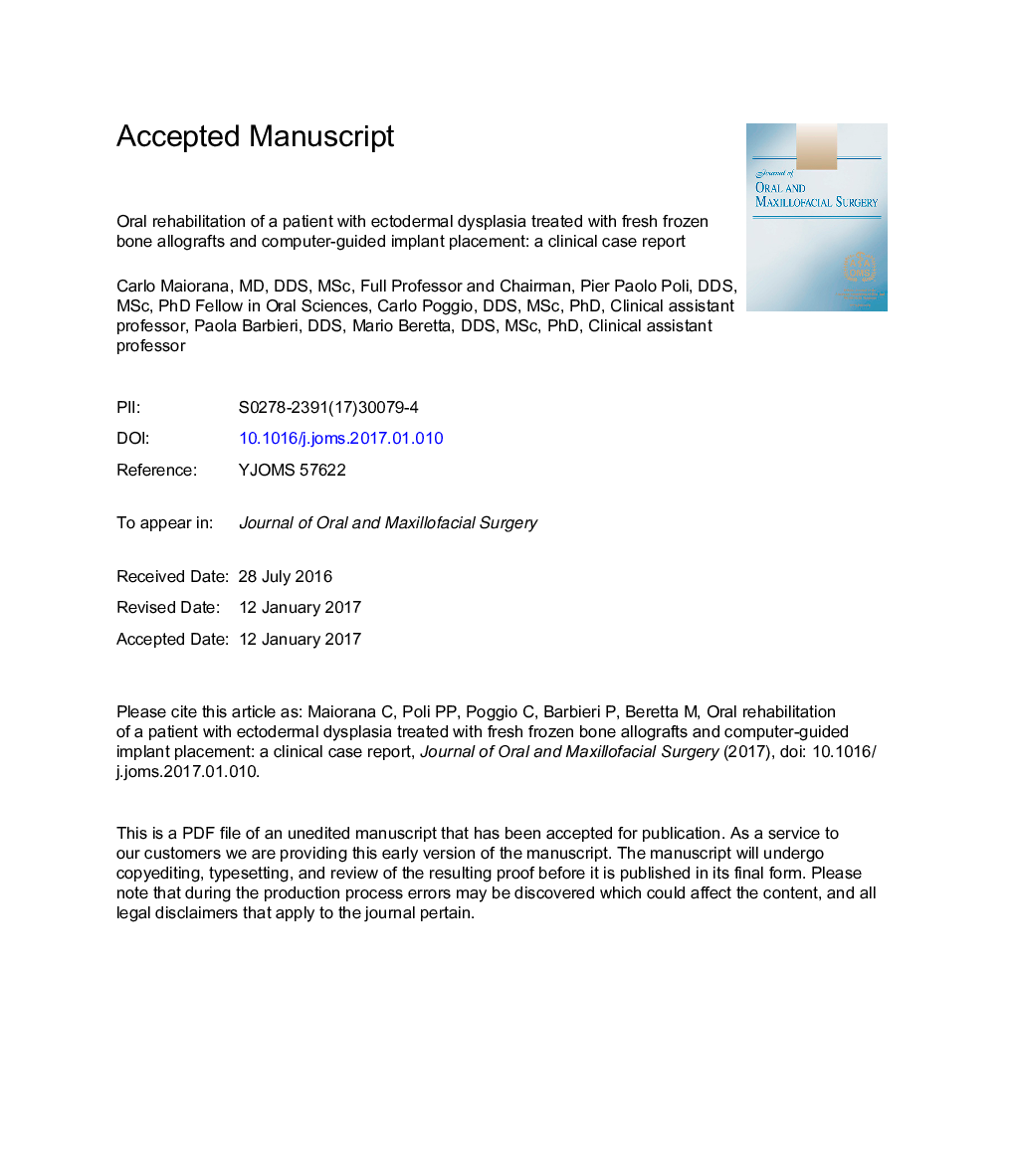| Article ID | Journal | Published Year | Pages | File Type |
|---|---|---|---|---|
| 5641694 | Journal of Oral and Maxillofacial Surgery | 2017 | 17 Pages |
Abstract
Ectodermal dysplasia (ED) is an inherited disorder characterized by abnormality of ectodermally derived structures. A recurrent oral finding is oligodontia, which in turn leads to a severely hypotrophic alveolar process with typical knife-edge morphology and adverse ridge contours. This unfavorable anatomy can seriously hamper proper implant placement. Fresh-frozen bone (FFB) allografts recently have been proposed to augment the residual bone volume for implant placement purposes; however, scientific evidence concerning the use of FFB to treat ED patients is absent. Similarly, data reporting computer-aided template-guided implant placement in medically compromised patients are limited. Thus the purpose of this report is to illustrate the oral rehabilitation of a female patient affected by ED and treated with appositional FFB block grafts and consecutive computer-guided flapless implant placement in a 2-stage procedure. Fixed implant-supported dental prostheses were finally delivered to the patient, which improved her self-esteem and quality of life. During the follow-up recall 1Â year after the prosthetic loading, the clinical examination showed healthy peri-implant soft tissues with no signs of bleeding on probing or pathologic probing depths. The panoramic radiograph confirmed the clinical stability of the result. Peri-implant marginal bone levels were radiographically stable with neither pathologic bone loss at the mesial and distal aspects of each implant nor peri-implant radiolucency. Within the limitations of this report, the use of FFB allografts in association with computer-aided flapless implant surgery might be considered a useful technique in patients affected by ED.
Related Topics
Health Sciences
Medicine and Dentistry
Dentistry, Oral Surgery and Medicine
Authors
Carlo MD, DDS, MSc, Pier Paolo DDS, MSc, PhD, Carlo DDS, MSc, PhD, Paola DDS, Mario DDS, MSc, PhD,
